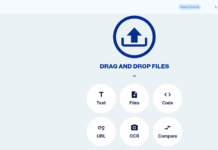Checking up on your competitors’ social media pages and websites to see the type of content they publish is not a competitive analysis. Running a quick scan on your competitors’ websites isn’t competitive analysis either; what then is competitive analysis, and how do you conduct one?
“Competitive analysis” is a common phrase used in today’s business space. Organizations include the “ability to run competitive analysis” as part of their hiring requirements, and freelancers typically add “competitive analysis” as part of their forte in a bid to win contracts and proposals from top clients.
From all angles, competitive analysis is important and plays a huge role in marketing. To do better and get the best out of your marketing campaigns, you must analyze and understand what your competitors are doing that you’re not doing or what they are doing that can be improved further.
The competitive analysis provides you with in-depth information about your competitors, so you get to work with the insights and try to beat them. To run a competitive analysis, there are many tools with the right features you need. In this article, we will cover an in-depth analysis of how to do competitive analysis to improve your marketing campaigns and, of course, see better results and ROI.
What is a Competitive Analysis?

Basically, competitive analysis means to analyze what your competitors are doing, learn how they do it, discover the tools they use in doing it, and evaluate/compare them with what you’re doing to find out where and what you need to improve, optimize, or drop. Competitive analysis is an on-demand marketing skill and a yardstick for measuring digital marketers especially.
Organizations can gain insights into their competitors’ products, sales, and marketing tactics through competitive analysis. The aim is to launch insights-driven campaigns and implement stronger business strategies to ward off competitors and secure higher market share. Apparently, there are pretty many benefits of competitive analysis to businesses at all sectors and levels.
Without competitive analysis, it is unlikely you can beat a competitor who’s already ahead of your organization or small business. Competitive analysis and a data-driven approach would launch your brand or organization to greater heights and win you a solid presence in your target markets.
There are quite many tools out there for running competitive analysis; they are paid tools, and some are integrated as add-on features to business software solutions. While competitive analysis is very needed in today’s business world, you need to blend it with a data-driven approach to get the best possible results.
Competitive analysis is not industry-specific; any business or corporation can take advantage and utilize it to the fullness. Hereunder are the core benefits of running competitive analysis as a business owner or leader.
What Is The Benefit Of Competitive Analysis?
1. Evaluate Product and Services Viability
Your products and services are good, but they are not the top in the market? Competitive analysis can help you find out what’s included in your competitors’ products and services that is lacking in yours, so you can carefully examine the features and implement them in your products and services. Competitive analysis can show you how viable your new product is, so you can think through and decide on how to go about the positioning and pricing.
2. Perfect Your Marketing Strategy
Here’s another top benefit of competitive analysis. While you can rely on data from various sources to improve your marketing strategies and campaigns, you need to blend in data from running a competitive analysis.
No doubt, competitive analysis exposes your competitors’ marketing strategies, so you can analyze and find ways to perfect yours – make it better than your competitors. This is most especially useful in today’s evolving marketing landscape.
3. Identify The Gaps
When it comes to marketing, competitive marketing remains the best way to identify opportunities you’re missing out on. A competitive analysis exposes unserved or underserved gaps in your strategies and tactics. It helps you understand the unserved or underserved customers so you can optimize your tactics to serve them better.
4. Find Your Unique Selling Point
Running a competitive analysis includes looking into your competitors’ about pages, mission statements, products & services, partnerships, and interfaces. When you look into these aspects, you’d find out their unique selling products or point, then find leverage to create yours. You may also want to look at customer reviews and feedback on your competitors’ services or products.
5. Discover The Challenges In Your Market
If you’re a new brand or organization, a comprehensive competitive analysis of the already established brands in your chosen niche will expose the challenges they face, so you can gear up and start planning – on time – how to overcome or leverage those challenges to succeed in the niche. When you know aforehand about the market changes, campaign styles, threats, and challenges, you will prepare fully and tackle them when they come to you.
6. Launch Better Products
Extensive market research plus a competitive analysis would do the magic to provide you with all the information and insights you need to create and launch products that beat the competition and deliver what the customers exactly. The analysis lets you know your competitors’ direction so you can focus on the same direction or find a new route.
Competitive Analysis In Marketing
Apparently, at every stage in marketing, there’s always a competitor to beat, and you can beat the challenge without first understanding what the competitor is doing that you’re not doing. You also need to know the tools, channels, and messages the competitor passes to the target audience. Competitive analysis remains a crucial requirement for marketing in this current age.
Competitive analysis has become an integral part of marketing. Marketers need to run a competitive analysis before proceeding to launch campaigns on specific platforms and networks. There are many ways competitive analysis is used in marketing – to most marketers; it is a crucial marketing tactic and strategy.
In fact, to excel in the marketing space, you must know how to run a competitive analysis – there are templates to choose from – and understand how to utilize the information or data from your analysis to optimize your campaigns to run much better than what your competitors are already doing.
Notwithstanding, although there are many templates out there, it is best that you devise your own template and strategy for running competitive analysis. That way, you would be unique – and in this space, uniqueness matters a lot. In keynotes, hereunder is how competitive analysis is used in marketing.
Keynotes
- With a comprehensive competitive analysis, you can discover the aspects where your business is doing much better than your competitors and then put more effort into those aspects to improve and remain ahead of the competition.
- A competitive analysis comes in handy when your company or new business isn’t moving forward as expected; it helps you to identify the areas that need to be improved – areas that your competitors are leveraging to do better than you.
- A competitive analysis takes you through various relevant aspects of your competitors’ performance and tactics. You learn their features, tactics, pricing patterns, marketing channels, differentiators, culture, positioning, market share, and other relevant stuff.
- Competitive analysis in marketing is done using premium tools; some SEO tools actually support it – talking about Ahrefs, SEMRush, and a couple of other marketing software tools used by today’s digital marketers and product launchers.
How To Do a Competitive Analysis Like a Pro in 2023?

Okay, with pretty much said about competitive analysis, how do you go about running one for your business or client? The truth is, there are several templates you’d find online for running competitive analysis, and these templates have worked for pretty many people. But then, let’s look through a nine-step competitive analysis strategy used by most companies.
1. Pinpoint Your Competitors
The first step to running a competitive analysis is knowing who your business or product is competing within the market. Identifying your competitors would see you launch a prior scan to know the products or companies that are topping the markets you choose to participate in. For example, Coca-Cola and Pepsi are targeting the same audiences; Coke is a competitor to Pepsi and vice versa.
Tip: To identify your competitors, you would need to check the products and companies that outrank yours in Search Engine Results Pages (SERPs).
2. Identify Indirect Competitors
Knowing your direct competitors is important, know your indirect competitors is also essential. Indirect competitors in this context refer to companies that offer almost the same products as you offer and are somehow competing in the same markets as you. Using our prior example, Coca-Cola is an indirect competitor to beer brands such as Budweiser and Heineken.
3. Check Out Your Replacement Competitors
Who is your replacement competitor? This refers to companies and brands that offer an entirely different product than you do, but somehow, their products can come in as a replacement for yours because it addresses almost the same issue. For example, if you’re a recruitment agency, your replacement competitor is companies that develop apps that help companies with recruitment. So, you would need to create a similar app to breach the competitive gap!
4. Run a SWOT Analysis
After you have decided who your competitors are from all angles, it is important that you run a SWOT analysis to determine the following:
- Strengths and weaknesses of your competitors
- Opportunities and threats you should know.
- Brand positioning and sales strategy
- Pricing strategy
- Marketing analysis of the competitors.
Note: SWOT means Strengths, Weaknesses, Opportunities, and Threats. So, running a SWOT analysis means identifying these areas of your competitors.
5. Find out Where Your Competitors Are Getting It Right and Follow Suit
From your SWOT analysis, find how your competitors place their products’ pricing, shipping policies, return policies, delivery strategies, and market share, and how often they update or launch new products. This step may also include looking into the quality of their after-sales support; you can get this by scooping their feedback and customer reviews from various platforms.
6. Go Deeper Into All Identified Competitors
At this point, you already know your competitors and their strategies, and now it’s time to dig deeper into their product features, target customers, the type of staff they work with, price points, and other relative stuff! Don’t forget you must also try to understand your competitors’ technologies and get them implemented into your service or product.
7. Document The Results (Use Charts and Graphs To Visualize Your Position)
Your analysis is almost complete; at this point, you need to gather all the information you’ve gotten about your competitors and document them in written format or visualize the data – using graphs and charts – for clearer interpretation. Visualization would be much better as it’d help you to find your exact position among your competitors.
8. Start Implementing The Changes
After you’re done with the processes above, you should start implementing the technologies and strategies used by your competitors in your service or product. This may imply changing a few features of your product, amending your policies, or adding new features that have not been available in your product or service – but have been available in that of your competitors.
Completely implementing the changes you discovered may take time, but it is worth the time. Of course, you’d also need some important business tools for this step. Also, while implementing the changes, take note of the Threats faced by your competitors and avoid, or leverage them to beat the competition.
9. Track The Results and Keep Improving
After implementing the changes, track your results through analytics and compare your previous results – before the competitive analysis and implementation – and the current stats you have at hand. If there were big changes, you’re on a ROLL.
Final Thoughts
So, how do you run a competitive analysis? It’s a multi-step marketing strategy to expose the strength and weaknesses of your competitors, then implement relevant changes to your offerings to beat the competition. Competitive analysis reports are interpreted with visualization tools like charts and graphs.


















